Gary Cooper
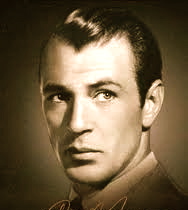
High Noon – Final Showdown

Final scene from the 1952 Western “High Noon” featuring Gary Cooper, Grace Kelly and Lee Van Cleef.
 Frank James Cooper, known professionally as Gary Cooper, (May 7, 1901 – May 13, 1961) was an American film actor. He was renowned for his quiet, understated acting style and his stoic, but at times intense screen persona, which was particularly well suited to the many Westerns he made. He also excelled in sophisticated, screwball romantic comedies. His career spanned from 1925 until shortly before his death in 1961, and comprised more than one hundred films.
Frank James Cooper, known professionally as Gary Cooper, (May 7, 1901 – May 13, 1961) was an American film actor. He was renowned for his quiet, understated acting style and his stoic, but at times intense screen persona, which was particularly well suited to the many Westerns he made. He also excelled in sophisticated, screwball romantic comedies. His career spanned from 1925 until shortly before his death in 1961, and comprised more than one hundred films.
Cooper received five Academy Award nominations for Best Actor, winning twice for Sergeant York and High Noon. He also received an Honorary Award in 1961 from the Academy.
Decades later, the American Film Institute named Cooper among the AFI’s 100 Years… 100 Stars, ranking 11th among males from the Classical Hollywood cinema period. In 2003, his performances as Will Kane in High Noon, Lou Gehrig in The Pride of the Yankees, and Alvin York in Sergeant York made the AFI’s 100 Years… 100 Heroes and Villains list, all of them as heroes.
Career
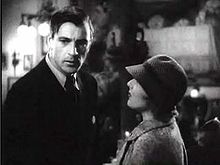 Cooper in Mr. Deeds Goes to Town with Jean Arthur (1936)
Cooper in Mr. Deeds Goes to Town with Jean Arthur (1936)
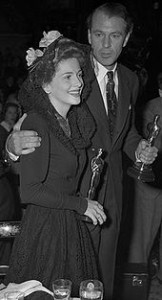 Gary Cooper and Joan Fontaine holding their Oscars at an Academy Awards after party in 1942.
Gary Cooper and Joan Fontaine holding their Oscars at an Academy Awards after party in 1942.
Unsuccessful as a salesman of electric signs and theatrical curtains, as a promoter for a local photographer and as an applicant for newspaper work in Los Angeles, Cooper found work as an actor in 1925. Beginning as an extra in the motion picture industry, usually being cast as a cowboy, he is known to have had an uncredited role in the Tom Mix Western Dick Turpin (1925). The following year, he received a screen credit in a two-reeler, Lightnin’ Wins, with actress Eileen Sedgwick as his leading lady.
After the release of this short film, Cooper accepted a long-term contract with Paramount. He changed his name to Gary in 1925, following the advice of casting director Nan Collins, who felt it evoked the “rough, tough” nature of her native Gary, Indiana.
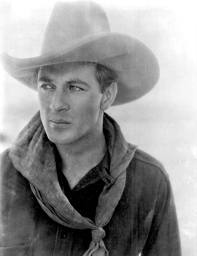 “Coop,” as he was called by his peers, went on to appear in over 100 films. Cooper broke through in a supporting role in the late silent Wings (1927), the first film to win an Academy Award for Best Picture, following it with Nevada (1927) co-starring Thelma Todd and William Powell, based on the Zane Gray novel. (This was remade as an early Robert Mitchumvehicle released in 1944, the only time Cooper and Mitchum played the same role.) Cooper became a major star with his first sound picture, The Virginian (1929) which features Walter Huston as the villainous Trampas. The Spoilers appeared the following year with Betty Compson (which was remade in 1942 with Marlene Dietrich, who resembled Compson, and John Wayne in Cooper’s role). Cooper followed this action film with Morocco (1930), starring Dietrich, in which he played a Foreign Legionnaire. Devil and the Deep (1932) featured Cary Grant in a supporting role with Talullah Bankhead and Cooper in the leads alongside Charles Laughton. The following year, Cooper was the second lead in the sophisticated Ernst Lubitsch comedy production of Noël Coward‘s Design for Living. He was billed under Fredric March in the kind of fast-talking role Cooper never played again after Cary Grant staked out the light comedy leading man field with The Awful Truth four years later. The screen adaptation of A Farewell to Arms (1932), directed by Frank Borzage, and the title role in Frank Capra‘s Mr. Deeds Goes to Town (1936) furthered Cooper’s box-office appeal.
“Coop,” as he was called by his peers, went on to appear in over 100 films. Cooper broke through in a supporting role in the late silent Wings (1927), the first film to win an Academy Award for Best Picture, following it with Nevada (1927) co-starring Thelma Todd and William Powell, based on the Zane Gray novel. (This was remade as an early Robert Mitchumvehicle released in 1944, the only time Cooper and Mitchum played the same role.) Cooper became a major star with his first sound picture, The Virginian (1929) which features Walter Huston as the villainous Trampas. The Spoilers appeared the following year with Betty Compson (which was remade in 1942 with Marlene Dietrich, who resembled Compson, and John Wayne in Cooper’s role). Cooper followed this action film with Morocco (1930), starring Dietrich, in which he played a Foreign Legionnaire. Devil and the Deep (1932) featured Cary Grant in a supporting role with Talullah Bankhead and Cooper in the leads alongside Charles Laughton. The following year, Cooper was the second lead in the sophisticated Ernst Lubitsch comedy production of Noël Coward‘s Design for Living. He was billed under Fredric March in the kind of fast-talking role Cooper never played again after Cary Grant staked out the light comedy leading man field with The Awful Truth four years later. The screen adaptation of A Farewell to Arms (1932), directed by Frank Borzage, and the title role in Frank Capra‘s Mr. Deeds Goes to Town (1936) furthered Cooper’s box-office appeal.
Cooper was producer David O. Selznick‘s first choice for the role of Rhett Butler in Gone with the Wind. (1939). When Cooper turned down the role, he was passionately against it. He is quoted as saying, “Gone with the Wind is going to be the biggest flop in Hollywood history. I’m glad it’ll be Clark Gable who’s falling flat on his nose, not me.” Alfred Hitchcock wanted him to star in Foreign Correspondent (1940) and Saboteur (1942). Cooper later admitted he had made a “mistake” in turning down the director. For the former film, Hitchcock cast look-alike Joel McCrea instead.
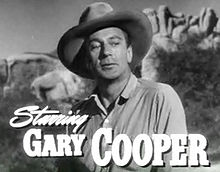 Cooper in Along Came Jones (1945)
Cooper in Along Came Jones (1945)
Cooper cemented his cowboy credentials again in The Westerner (1940), with Walter Brennan as Judge Roy Bean, and followed that immediately afterward with the lavish North West Mounted Police (1940), directed by Cecil B. DeMille and featuring Paulette Goddard.
In 1942, Cooper won his first Academy Award for Best Actor for his performance as the title character in Sergeant York (1941). It has often been rumored that Alvin York refused to authorize a movie about his life unless Cooper portrayed him. Evidence has since surfaced that the film’s producer, Jesse L. Lasky, sent a telegram pleading with Cooper to take the part and signed York’s name to it. Meet John Doe had been released earlier in 1941, a great success under the direction of Frank Capra. Cooper worked with Ingrid Bergman in For Whom the Bell Tolls (1943), directed by Sam Wood and based on a novel by Cooper’s close friend Ernest Hemingway; they spent many vacations in Sun Valley, Idaho together. A Western comedy lampooning his hesitant speech and mannerisms and his own image in general followed called Along Came Jones (1945) in which he relied on gunslinging Loretta Young to save him. Cooper also starred with Patricia Neal in the original screen adaptation of the Ayn Rand novel The Fountainhead (1949).
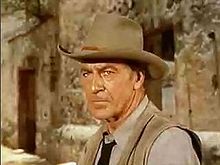 Gary Cooper in Vera Cruz (1954)
Gary Cooper in Vera Cruz (1954)
Cooper won his second Best Actor Academy Award for his performance as Marshal Will Kane in High Noon (1952), sometimes thought his finest role. Ill with an ulcer, he wasn’t present to receive his Academy Award in February 1953. He asked John Wayne to accept it on his behalf, a bit of irony in light of Wayne’s stated distaste for the film.
Cooper continued to play the lead in films almost to the end of his life. Among his later box office hits were the stark Western adventure Garden of Evil (1954) with Susan Hayward and Richard Widmark; Vera Cruz (1954), an extremely influential Western in which he guns down villain Burt Lancaster in a showdown; his portrayal of a Quaker farmer during the American Civil War in William Wyler‘s Friendly Persuasion (1956); Billy Wilder‘s Love in the Afternoon (1957) with Audrey Hepburn; and Anthony Mann‘s Man of the West(1958), a hard-edged action Western with Lee J. Cobb. His final motion picture was aBritish film, The Naked Edge (1961), directed by Michael Anderson. Among his final projects was narrating an NBC documentary, The Real West, in which he helped clear up myths about legendary Western figures.
Other activities – Family and relationships
Cooper had high-profile relationships with actresses Clara Bow, Lupe Vélez and the American-born socialite-spy Countess Carla Dentice di Frasso (née Dorothy Caldwell Taylor, formerly wife of British pioneer aviator Claude Grahame-White).
 Una Merkel (right) with Phyllis Brooks and Gary Cooper at a Brisbane press conference on their way to entertain the troops (1943)
Una Merkel (right) with Phyllis Brooks and Gary Cooper at a Brisbane press conference on their way to entertain the troops (1943)
 Cooper won an Academy Award for High Noon (1952), and the film is widely considered a classic.
Cooper won an Academy Award for High Noon (1952), and the film is widely considered a classic.
On December 15, 1933, Cooper wed Veronica Balfe (May 27, 1913 – February 16, 2000), known as ‘Rocky’. Balfe was a New York Roman Catholic socialite who had briefly acted under the name of Sandra Shaw. She appeared in the film No Other Woman, but her most widely seen role was in King Kong (1933), as the woman dropped by Kong. Her third and final film was Blood Money (also 1933). Her father was governor of the New York Stock Exchange, and her uncle was motion-picture art director Cedric Gibbons. During the 1930s she also became the California state women’s skeet shooting champion. Cooper and Balfe had one child, Maria, now Maria Cooper Janis, married to classical pianist Byron Janis.
In the 1950’s Cooper was slowly drawn to Catholicism and was baptized a Catholic in 1958. After he was married, but prior to his conversion, Cooper had affairs with several famous co-stars, including Marlene Dietrich, Grace Kelly and Patricia Neal. He pressured Neal to have an abortion in 1950, because fathering a child out of wedlock could have destroyed his career. Cooper’s daughter Maria, when she was a little girl, famously spat at Neal, but many years later, the two became friends. Cooper separated from his wife between 1951 and 1954.
Politics and appearances before Congress
 Cooper was a staunch supporter of the Republican Party. He voted for Calvin Coolidge in 1924 and Herbert Hoover in 1928 and 1932. He campaigned for Wendell Willkie in 1940, and heavily campaigned for Thomas Dewey in 1944.
Cooper was a staunch supporter of the Republican Party. He voted for Calvin Coolidge in 1924 and Herbert Hoover in 1928 and 1932. He campaigned for Wendell Willkie in 1940, and heavily campaigned for Thomas Dewey in 1944.
In 1944, Cooper joined the anti-communist Motion Picture Alliance for the Preservation of American Ideals. While filming Good Sam, he testified before the House Committee on Un-American Activities on October 23, 1947, characterized as a “friendly” witness. Asked if he had observed “communistic influence in Hollywood”, Cooper named no one in particular but said he had “turned down quite a few scripts because I thought they were tinged with communistic ideas;” he also said he had heard statements such as “don’t you think the Constitution of the United States is about 150 years out of date?” and “perhaps this would be a more efficient government without a Congress”— statements he characterized as “very un-American”. He also told the committee the following:
“Several years ago, when communism was more of a social chit-chatter in parties for offices, and so on when communism didn’t have the implications that it has now, discussion of communism was more open and I remember hearing statements from some folks to the effect that the communistic system had a great many features that were desirable. It offered the actors and artists — in other words, the creative people — a special place in government where we would be somewhat immune from the ordinary leveling of income. And as I remember, some actor’s name was mentioned to me who had a house in Moscow which was very large — he had three cars, and stuff, with his house being quite a bit larger than my house in Beverly Hills at the time — and it looked to me like a pretty phony come-on to us in the picture business. From that time on, I could never take any of this pinko mouthing very seriously, because I didn’t feel it was on the level.”
Cooper’s testimony occurred a month before the Hollywood blacklist was established. Other members of the Motion Picture Alliance for the Preservation of American Ideals included Clark Gable, Ginger Rogers, Victor Fleming and Barbara Stanwyck among many others.
Death
In April 1960, Cooper underwent surgery for prostate cancer after it had spread to his colon. It spread to his lungs and bones shortly thereafter.
Cooper was too ill to attend the Academy Awards ceremony in April 1961, so his close friend James Stewart accepted the honorary Oscar on his behalf. Stewart’s emotional speech hinted that something was seriously wrong, and the next day newspapers ran the headline, “Gary Cooper has cancer”. One month later, on May 13, 1961, six days after his 60th birthday, Cooper died.
Cooper was originally interred in Holy Cross Catholic Cemetery in Culver City, California. In May 1974 his body was removed from the Grotto Section of Holy Cross Cemetery, when his widow Veronica remarried and moved to New York, and she had Cooper’s bodyexhumed and reburied in Sacred Heart Cemetery, in Southampton, New York, on Long Island. Veronica “Rocky” Cooper-Converse died in 2000 and was buried near Cooper at Sacred Heart Cemetery.

